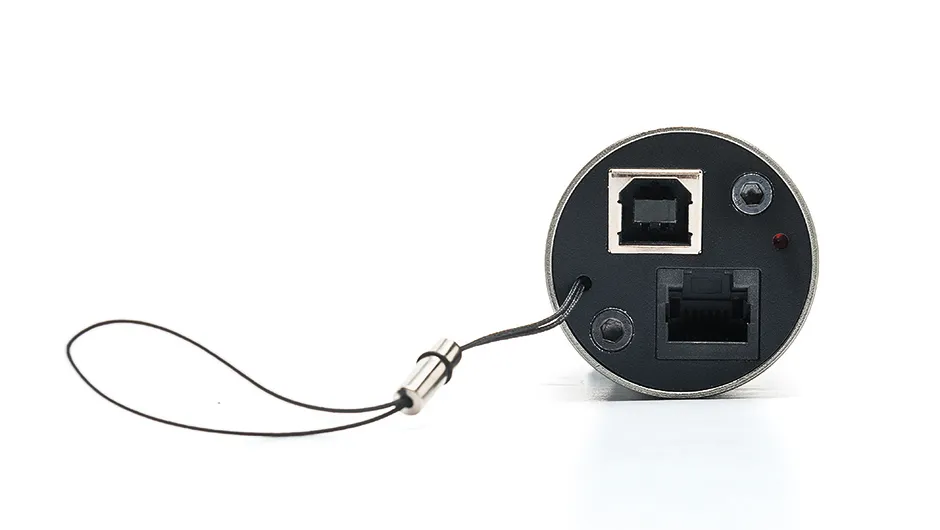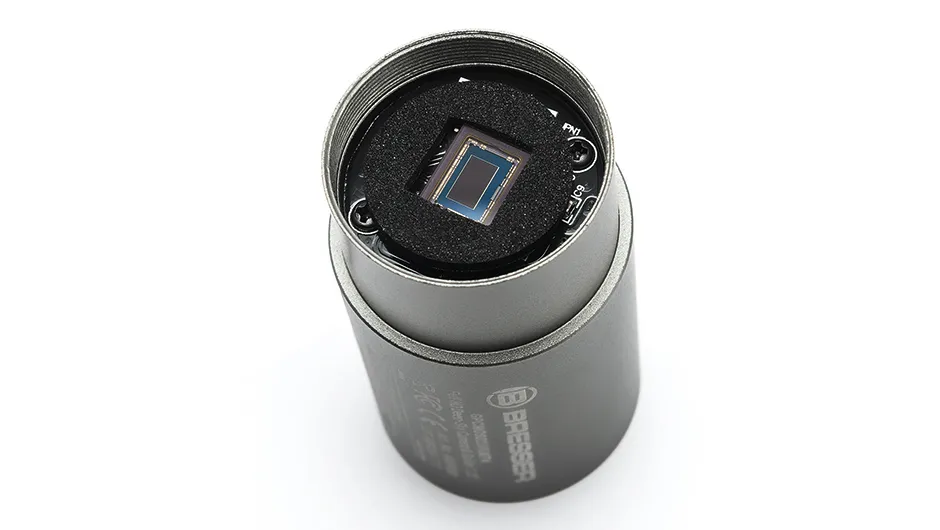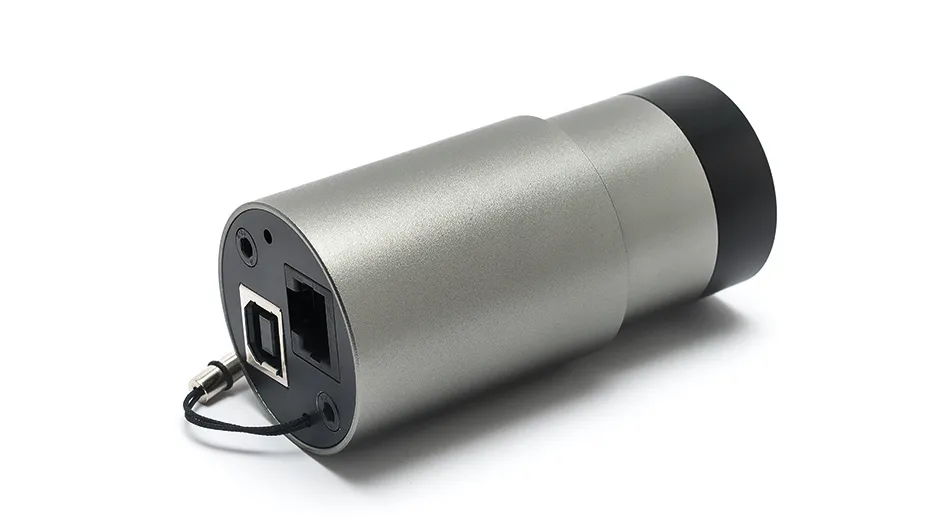Sony’s IMX290 sensor has proven popular since its launch into the astronomy market and now Bresser has introduced its Full HD Deep-Sky Camera to take advantage of its impressive specs.
The camera uses the USB 2.0 format for downloading images to your laptop and the camera is aimed at planetary, lunar and some basic deep-sky imaging.
With a built-in guide port it can also be used for autoguiding and comes supplied with a 1.25-inch nosepiece, ST4 guide cable, USB 2.0 cable and a software CD.
At first glance the camera has the generic form of other cameras on the market.What helps differentiate it is the clear glass in front of the sensor instead of IR glass.This means the camera will need a UV/IR-cut filter when imaging planets and the Moon.
Once the software and drivers are installed the camera can be used with the ToupSky image capture and processing software.Using the full resolution in planetary mode the camera will run at around 20fps.
Using Region of Interest (ROI) you can obtain a higher speed, but since it relies on USB 2.0, you can’t really call it a high-speed camera now that USB 3.0 is becoming standard.
The manufacturer states that the camera can be used with other popular capture software, however a couple of test runs in SharpCap and FireCapture revealed it wasn’t quite as easy as they say.
There are two ways to connect the camera under settings in SharpCap.The first is using the ASCOM driver.The problem is that the camera can only run in RGB24 and not RAW 8 or 12-bit modes.This can cause all sorts of problems with colour and rings around planets.
You also can’t take good deep-sky images in that setting.While an ASCOM driver is included in the software, it seems the RAW drivers have been left out.
The other way of connecting the camera is to use a driver from another manufacturer which does allow the camera to run in RAW mode.This means we could only get the camera to image properly in the ToupSky software supplied.
This camera is on our list of the best cameras for astrophotography.

Concentrate on the details
To image the Moon we first set the camera up on a 4.5-inch refractor.The picture on screen was very good, containing lots of detail.With the camera set in 8-bit mode and RAW, the image had a green cast like most other cameras.
This is due to the sensor’s Bayer matrix layout containing more green pixels.However, this can be easily balanced out during post processing.
Our next target was Jupiter.Unfortunately, the seeing conditions didn’t allow us to use a larger aperture telescope so we continued with the 4.5-inch refractor and a 4x Powermate.
On the control panel there is a check box for region of interest (ROI).With this checked you can draw a small box around Jupiter and remove the area you don’t want to image, which allows the camera to work at a higher frame rate.

The resulting images were very good for the equipment being used, with lots of detail.We then chose M27 as a deep-sky object to image using the Live Stack feature in ToupSky.
By covering the telescope and taking some dark frames using the dark field correction tab you can subtract the darks for live stacking.
ToupSky also contains a trigger mode for long exposure.When imaging in long exposure mode you need to make sure the RAW mode tab is selected.
Finally, although we generally don’t use colour cameras for solar imaging in H-alpha, we used the Bresser on a Lunt solar scope and got some quite interesting detail of the Sun.
Overall, a decent camera for imaging a large range of targets with the ability to image solar, lunar and deep-sky objects using the proprietary software.

Bresser full HD deep-sky camera IMX290 CMOS sensor
The IMX290 colour sensor is highly sensitive to faint light and has extremely low read noise.While it carries a faint amount of ampglow this is easily countered by using dark frames taken along with the light frames.
With a sensor size of 1,936x1,096 and a pixel size of 2.9µm the camera can image a range of targets on modest equipment, making it a quite versatile device and ideal for those just starting out in astrophotography.
If the camera is connected to larger aperture equipment you can use lower magnification in planetary and lunar imaging thanks to its pixel size, particularly helpful considering the ever-changing seeing conditions in the UK.
Sony’s IMX290 sensor has a full range of ROI settings to help frame any object, so for planetary imaging you can use a smaller region to achieve a higher frame rate.
The sensitivity of the sensor allows you to do short exposure deep-sky imaging and helps with imaging setups that don’t have an accurate polar alignment or guiding facility.
Bresser full HD deep-sky camera: outstanding features
Software
A software CD included in the box contains Bresser’s ToupSky software, ASCOM and camera drivers.This is handy when you’re setting the camera up, especially if you have no access to an internet connection.The software is compatible with Windows 7, 8 and 10, Mac OSX and Linux.
Camera body
The camera has an aluminium body with internal connections that allow for the air around the camera to cool the sensor.Another benefit of the body design is that it allows the camera to be used on a lot of solar equipment without the need for a Barlow to be attached to the front.
USB 2.0 port
Using the USB 2.0 format means the camera can be connected to an array of USB hubs and USB extension leads.
Guide port
The camera has an ST4 guide port which means it can be used to guide the most popular mounts on the market.This also allows it to be used with popular guiding software like PHD1 and 2.The tubular design of the camera allows for it to be mounted on a range of guidescopes.
C-mount adaptor
The camera can be connected to an array of equipment via the included the C-mount adaptor.This allows you to screw filters and reducers to the front of the camera.If the camera is connected to an optional M42-to-C-mount adaptor, it can be fitted to a filter wheel or a large format Barlow.
Bresser full HD deep-sky camera: vital stats
- Price: £231.00
- Weight: 90g
- Supplier: Telescope House
- Telephone: 01342 837098
- Website:www.telescopehouse.com
This review originally appeared in the August 2018 issue of BBC Sky at Night Magazine
